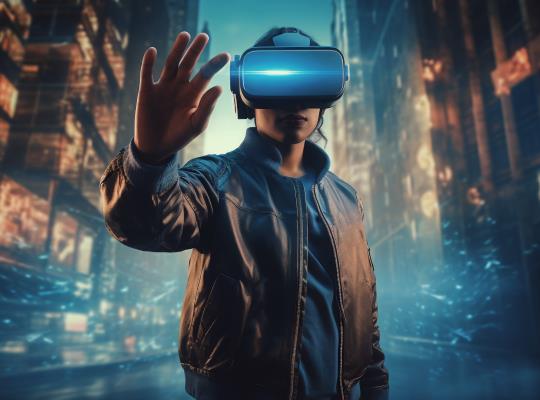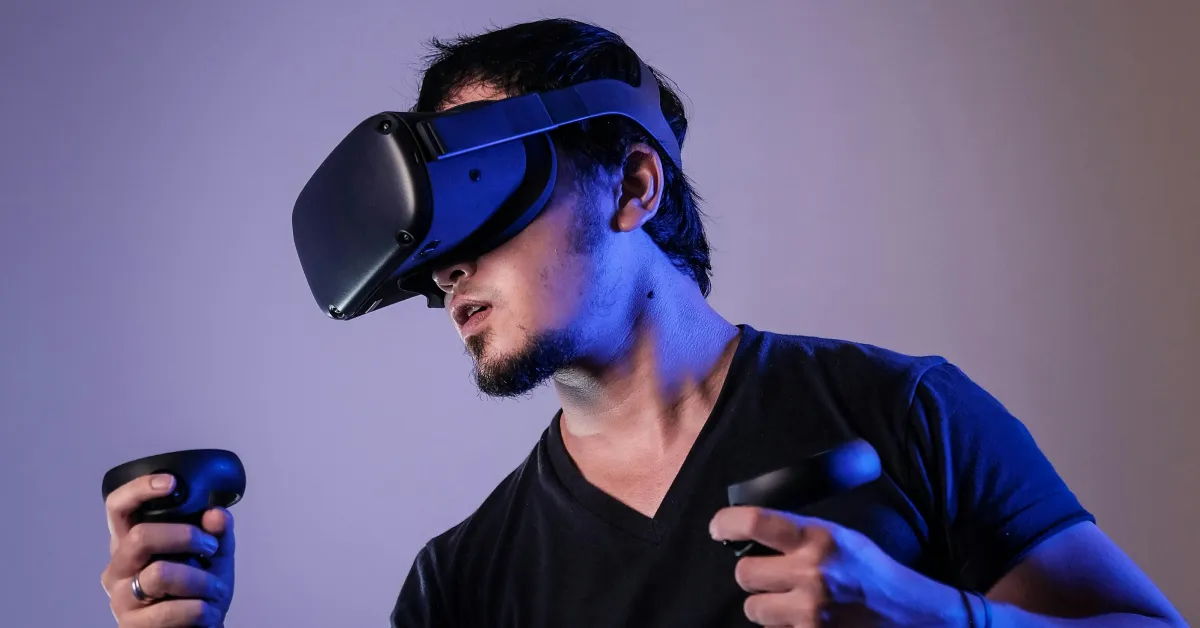Table of Contents
Understanding Virtual Reality (VR) with a Complete Beginner’s Guide
In today’s digital age, the question “What is Virtual Reality?” or “What is VR?” has become increasingly important. Technology is advancing rapidly, and with it, our ways of experiencing the world are evolving too. But what do you mean by Virtual Reality? What is the Virtual Reality meaning?
In this ultimate guide, we’ll take a deep dive into Virtual Reality (VR) — its origins, the technology behind it, its definitions, and what Virtual Reality means in modern times. By the end, you’ll have a clear and in-depth understanding of VR, and why companies like Quantile Corp are seen as trusted VR companies creating innovative VR solutions for businesses worldwide.
What is Virtual Reality?
So, let’s start simple: what is Virtual Reality?
Virtual Reality (VR) is a computer-generated environment that immerses the user into a simulated 3D world. Unlike watching a movie on a screen, VR places you inside an environment where you can look around, move, and even interact.
In other words, Virtual Reality means creating a space where digital experiences feel real. VR is the technology that makes you feel present in a computer-generated world, not just an observer of it.
Virtual Reality Meaning: Beyond the Buzzword
The virtual reality meaning goes deeper than just futuristic headsets or games.
Breaking it down:
- Virtual – Not physically real, but existing through software and technology
- Reality – What we perceive through our senses — sight, sound, touch, and sometimes even smell or motion
- Virtual Reality – Now, this means merging these two, so we perceive a digital environment as if it were truly real.
When people often ask about Virtual Reality, the answer is not just about technology, it’s about perception and experience.
More about Virtual Reality
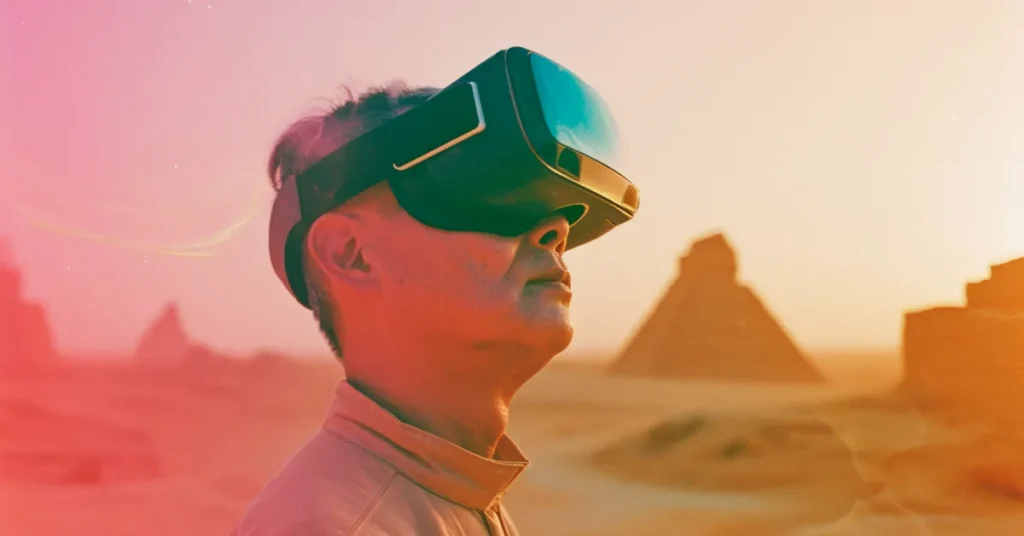
To really understand what VR is, it’s useful to look at its journey.
Early Concepts (1960s–1980s):
The idea of immersing humans into artificial environments started with early flight simulators and head-mounted displays like the “Sword of Damocles.
Rise of VR (1990s):
VR began entering gaming arcades and military training. But the technology was bulky and limited.
Modern VR (2010s–today):
With advances in computing power, graphics, and affordable headsets like Oculus, VR entered homes, businesses, and classrooms.
The Future of VR:
VR is now merging with AI, cloud, and 5G, making experiences more realistic and widely accessible.
Understanding this evolution helps frame the virtual reality meaning — it’s not just about gadgets, but about an ongoing effort to bring imagination into reality.
How Does Virtual Reality Work?
Virtual Reality is powered by a combination of hardware and software:
- Headsets: Devices worn on the head that display stereoscopic visuals, tricking your brain into perceiving depth and 360-degree environments
- Sensors: Track head and body movements, allowing you to “look around” or “walk through” the virtual world.
- Controllers: Let you touch, grab, or interact with virtual objects.
- Software: The core of VR solutions — creating the digital environment, physics, and interactivity.
So, Virtual Reality means immersing the user’s senses in a digital world through a seamless blend of vision, motion, and interactivity.
The Core Meaning of Virtual Reality
To better understand the Virtual Reality meaning, let’s outline the principles that define it:
- Immersion: VR surrounds your senses, making you feel present inside the environment
- Interactivity: You can interact with objects, people, or simulations inside the VR world.
- Realism: The closer the virtual environment mimics real life, the more convincing it becomes.
- Presence: The psychological effect where your brain accepts the digital environment as if it were real.
These four principles are at the heart of what Virtual Reality means in every industry today.
Different Types of Virtual Reality
Another way to explain what VR is is by looking at the categories of experiences:
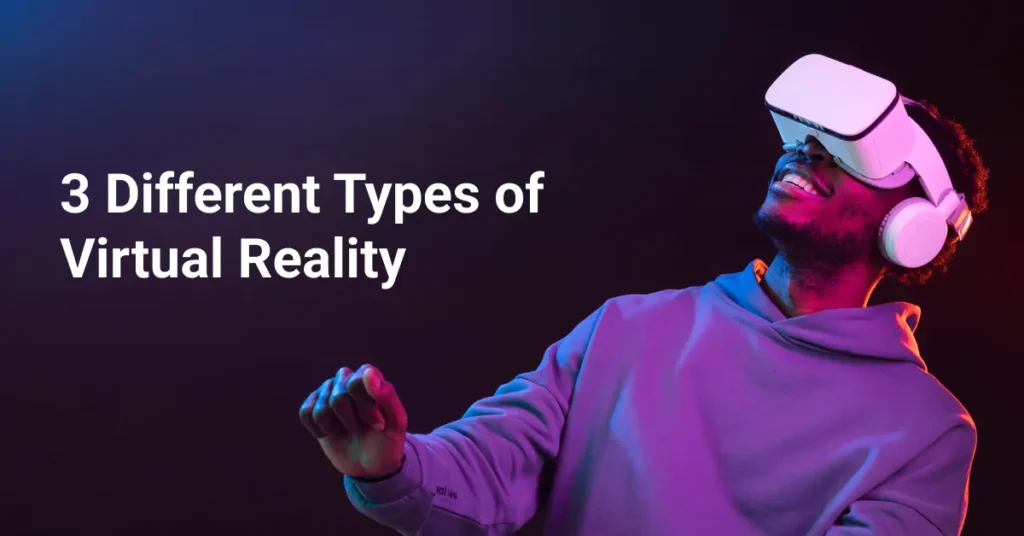
Non-Immersive VR:
Involves using a computer screen or mobile app to interact with 3D environments (example: simulation games).
Semi-Immersive VR:
Provides partial immersion, often used in flight simulators or training modules.
Fully Immersive VR:
Uses headsets and sensors to completely surround the user in a digital world. This is the most common understanding of VR today. Understanding these types adds depth to the virtual reality meaning — it’s not one-size-fits-all, but a spectrum of immersion.
What do You Mean by VR? Misconceptions Unveiled!
When people ask, “What is VR?” or “What do you mean by Virtual Reality?”, misconceptions often cloud the answer.
- Myth 1: VR is only for gaming → Reality: VR is widely used in industries like healthcare, education, and manufacturing.
- Myth 2: VR makes you sick → Reality: Modern VR headsets and software have improved drastically, reducing motion sickness.
- Myth 3: VR is too expensive → Reality: Affordable VR solutions are available today, even for small businesses
By clearing these misconceptions, it’s easier to understand what Virtual Reality means in the real world.
The Role of VR Companies and Solutions
While VR technology is powerful, its impact depends on the solutions built around it. This is where specialized VR companies like Quantile Corp come in.
- They design VR solutions tailored to industries such as healthcare, education, and manufacturing.
- They ensure VR isn’t just about technology but about solving real-world problems.
- They bridge the gap between “virtual reality meaning” and practical business use.
In short, if you’re wondering what Virtual Reality means for businesses? — it means partnering with the right VR company to unlock value and innovation.
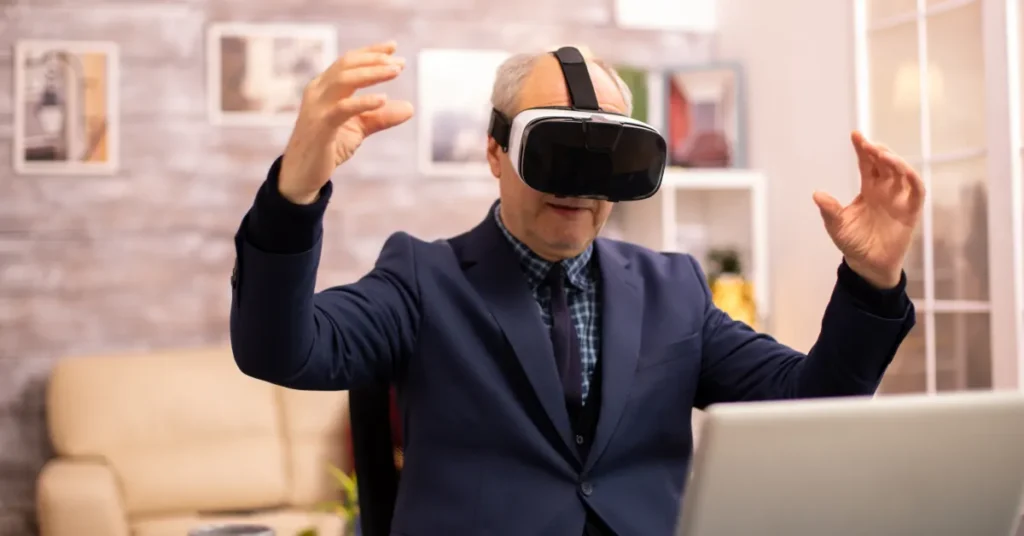
Virtual Reality is the Way Ahead
The future of VR is shaping up to be even more exciting:
- AI-driven VR: Experiences that adapt to the user in real time
- Haptic Feedback: Touch and feel in VR environments.
- Social VR Worlds: Digital spaces for collaboration and connection.
- Everyday Integration: From classrooms to hospitals to workplaces.
So, when people ask, “what is VR’s future?” — the answer is: Virtual Reality means becoming an integral part of our everyday lives.
Conclusion
So, what is Virtual Reality? Simply put, Virtual Reality means immersing yourself in a digital world created by computers, where you can interact, learn, and explore just as if it were real. The virtual reality meaning is not just about fun or futuristic tech; it’s about redefining how humans experience the world.
And with leading VR companies like Quantile Corp creating innovative VR solutions, the possibilities for VR are expanding rapidly, shaping industries and everyday experiences.


